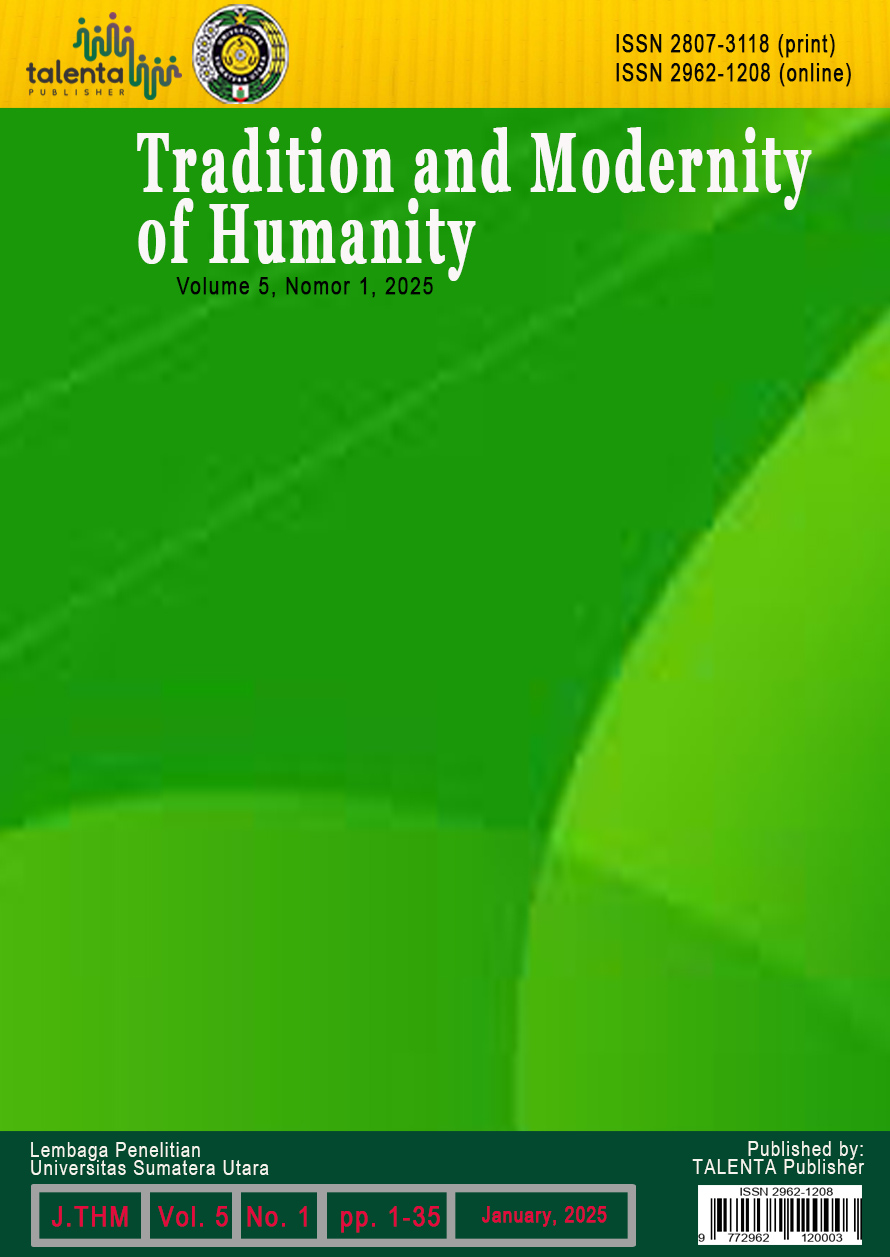Kuning Herb in Karo Traditional Medicinal: An Ecolingustic Study
DOI:
https://doi.org/10.32734/tmh.v5i1.21666Keywords:
Kuning Herb, Karo traditional medicinal, EcolinguisticAbstract
In this study, the method used is descriptive qualitative, which aims to explore and understand the meaning and views of the community towards traditional healing practices that are developing among the Karo community. This study shows that the practice of traditional kuning medicine in the Karo community is not only a form of disease treatment, but also a manifestation of ecological knowledge and local wisdom reflected in language. Through ecolinguistic studies, it was found that the lexicon used to refer to various types of medicinal plants in the kuning potion contains interrelated cultural, ecological, and linguistic values. A total of 22 names of medicinal plants that were successfully identified have local names that are typical in the Karo language, such as bahing (ginger), mburle (bangle), and ladʒa (black turmeric). Each lexicon not only indicates a particular plant species, but also contains information about the parts of the plant used, the medicinal function, and the symbolic meaning in community practices.
Downloads
Downloads
Published
Issue
Section
License
Copyright (c) 2025 Tradition and Modernity of Humanity

This work is licensed under a Creative Commons Attribution-ShareAlike 4.0 International License.






